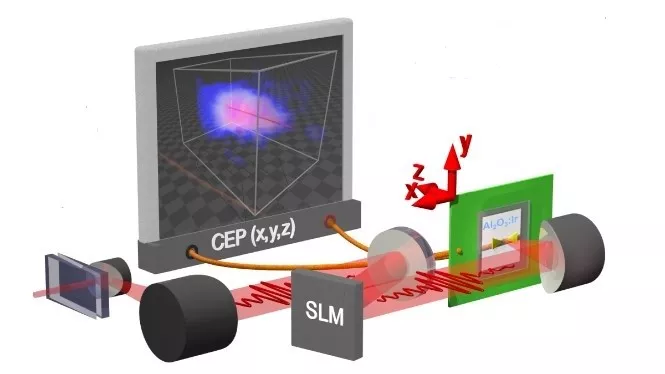The researchers of the HUN-REN Wigner Research Centre for Physics (Wigner RCP) have developed an optical chip suitable for measuring the phase of ultrashort laser pulses. This device will play an important role in understanding the interaction between light and matter, potentially contributing to the creation of systems faster than electronic circuits in the future. The paper presenting the results was published in the prestigious scientific journal Nature Communications.
In the world surrounding us, electronic circuits control most aspects of life, whether it's heating buildings, telecommunications, or transportation vehicles. However, since the speed of modern electronic devices is limited, researchers are also exploring methods that utilize light to control various processes. There are phenomena much faster than electronic processes, such as certain chemical reactions, which can be controlled with laser light because the electric field of light changes tens of thousands times faster than we can alter current in the fastest circuits.
However, manipulating the electric field of light poses a significant challenge. While researchers have access to lasers generating ultrashort pulses that can initiate certain chemical reactions in less than a millionth of a billionth of a second, it is very difficult to control the phase of the laser pulses, i.e. the precise moment at which the electric field strength should reach its maximum within the laser light flash.
The “Momentum” research group led by Péter Dombi at HUN-REN Wigner RCP has now developed a radically new optical chip to solve this problem, enabling the measurement of the phase of laser pulses. In their paper published in the prestigious journal Nature Communications, they also demonstrate a new method for changing the phase within a laser beam.

Mapping the phase of laser pulses: an ultrashort light pulse is focused onto the optical chip, temporarily rendering the nanoscale sensor metallic. This process depends on the phase of the laser pulse, allowing for three-dimensional phase scanning.
The new method is exceptional because, while there is established practice for measuring the phase of intense laser pulses, it requires a large vacuum chamber and is not suitable for performing three-dimensional scanning. Using the new device, however, they managed to measure the phase with high spatial resolution around the focal point of a laser pulse by many orders weaker than ever before, with only 1 nanojoule of energy.
"We built upon our previous experiences when creating the optical chip, which were related to how insulating media can be made conductive using laser light. Exploiting this, we designed an optical circuit with which we can precisely measure the phase around the focus of a laser beam using three-dimensional scanning," explained Václav Hanus, the first author of the study and a member of the HUN-REN Wigner RCP research group. "It creates exciting new possibilities that we can so easily address laser beam characterization with this new tool, which we named phase scanner," he added.
"It's a significant advancement that we were able to develop such a cutting-edge technology for users of short-pulse lasers. We have plenty of ideas on how to use our phase scanner in our own research, which focuses on studying the interaction between laser light and various nanostructures. The production of the optical chip was a true team effort, as it required access to high-tech equipment both at the Fraunhofer Institute in Jena and the nanofabrication laboratory at the ELI-ALPS Laser Research Institute in Szeged to realize such a tool, using which successful phase scanning experiments were conducted in Budapest subsequently," summarized Péter Dombi.